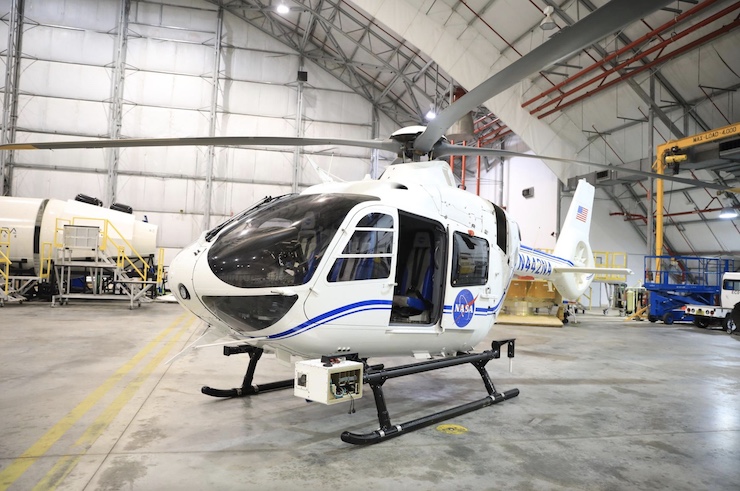
© NASA/Isaac Watson
While best known for their contributions to exploring outer space, the National Aeronautics and Space Administration (NASA)’s impact reaches far beyond that. NASA was formed in 1958 with the purpose of establishing the United States as a leader in the aviation industry. NASA proved its aviation and engineering dominance during the Cold War’s Space Race, culminating in the Apollo 11 mission from July 16 to 24, 1969, where Buzz Aldrin became the first human to walk on the Moon. Since then, NASA has ensured that the United States maintains its position as the world’s leading aviation expert, both within and beyond Earth’s atmosphere.
At its core, NASA is a research and development center. It has been responsible for the advancement of countless aviation industry milestones, benefiting government, private, and civilian sectors. When the United States began utilizing military drones, NASA was there to assist in the research and development of these tools, which have gone on to reshape military operations. As the drone industry expanded beyond military applications, NASA again remained at the forefront of unmanned aviation development.
In 2007, NASA became a key contributor to the Federal Aviation Administration’s (FAA) Next Generation Air Transportation System (NextGen) program. The goal of NextGen is to modernize the aviation industry within the United States National Airspace (NAS). This includes advancements for both manned and unmanned aviation systems, set to be completed by 2030. One of the projects that NASA launched as part of the NextGen program is the development of a specialized data-collecting pod.
The pod, called the Airborne Instrumentation for Real-world Video of Urban Environments (AIRVUE), was developed at NASA’s Armstrong Research Center in Edwards, California, under the leadership of Nelson Brown. Mr. Brown explains that the goal of the AIRVUE project is to collect datasets that would allow drones to safely integrate into shared low-altitude airspace within urban environments. The collected data would be used to run simulation tests before safely conducting real-world experiments. “Data is the fuel for machine learning,” said Mr. Brown. “We hope to inspire innovation by providing the computer vision community with realistic flight scenarios. Accessible datasets have been essential to advances in driver aids and self-driving cars, but so far, we haven’t seen open datasets like this in aviation.”
Once Mr. Brown and his team developed the concept for the pod, a team of engineers created detailed diagrams for the device. These diagrams were then sent to the Armstrong Center’s Experimental Fabrication Shop. The shop built the custom pod, a box roughly the size of a standard kitchen microwave, with a protected camera. Once the pod was completed, experts at Armstrong’s Engineering Support Branch installed a variety of sensors within the box to collect the pertinent data. The final step in the development of the AIRVUE pod was to run comprehensive tests to ensure it could safely withstand flight while performing its duties.
Finally, the AIRVUE pod was ready for testing. For this stage of the experiment, the pod was taken to the Kennedy Space Center on Merritt Island, Florida. Technicians attached the AIRVUE pod to an arm extending from the landing skid of an Airbus H135 helicopter. The helicopter took flight, and the pod began collecting data. After the pod’s first flight, Mr. Brown and his team will analyze the data, make any necessary adjustments, and continue with further testing. “The team hopes to use the pod to collect large, diverse, and accessible visual datasets of weather and other obstacles,” NASA states. “They will then use that information to create a data cloud for manufacturers of self-flying air taxis, or drones, or similar aircraft to access. Developers can use this data to evaluate how well their aircraft can ‘see’ the complex world around them.”
NASA’s continued advancements in aviation and unmanned flight technology not only showcase the agency’s commitment to pushing the boundaries of exploration but also highlight its critical role in shaping the future of air travel. Through innovative projects like the AIRVUE pod, NASA is paving the way for safer, more efficient integration of drones and autonomous vehicles into our daily skies. As the world moves closer to the realization of self-flying air taxis and advanced aviation systems, NASA’s contributions will undoubtedly remain at the forefront, ensuring that the future of aviation is both visionary and grounded in cutting-edge research and technology.
|